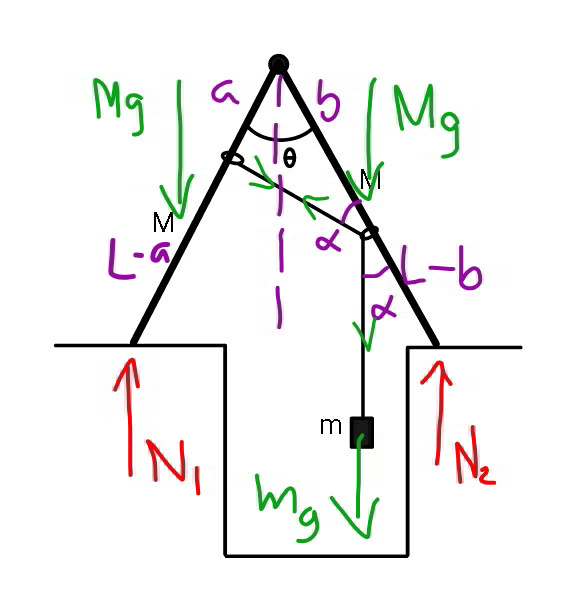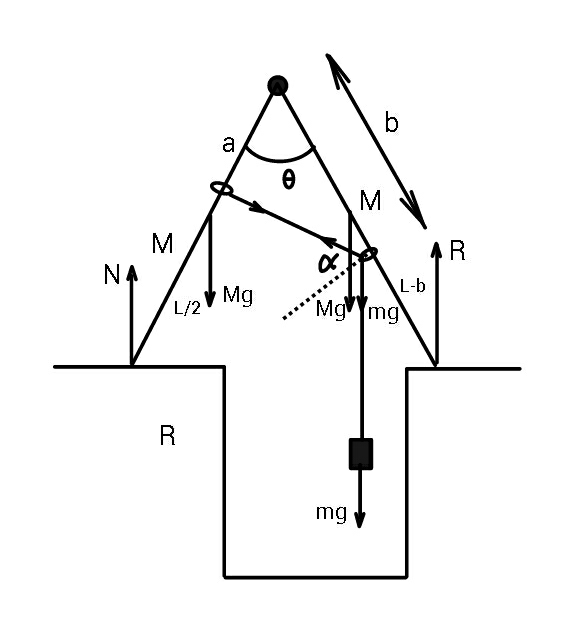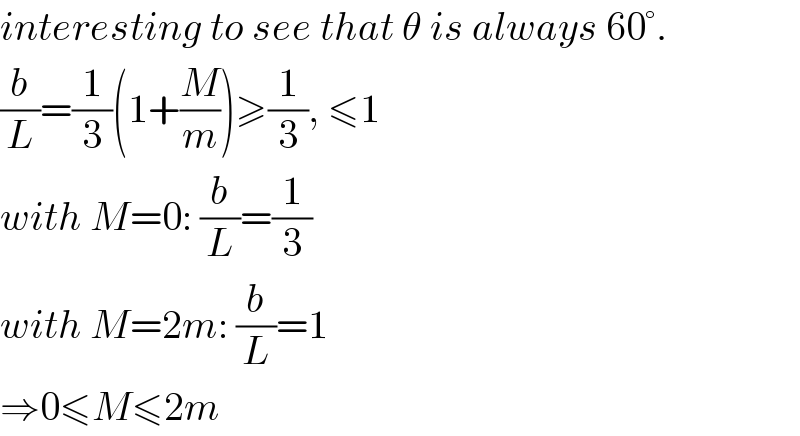
Question and Answers Forum
Question Number 70395 by ajfour last updated on 04/Oct/19

Commented by ajfour last updated on 04/Oct/19

Answered by ajfour last updated on 04/Oct/19

Commented by ajfour last updated on 04/Oct/19
![let θ/2=φ As moment about left end is zero; R(2Lsin φ)=2MgLsin φ+mg(L+b)sin φ ⇒ R=Mg+((mg)/2)(1+(b/L)) As moment about right end is zero; N=Mg+((mg)/2)(1−(b/L)) Torque on left half about hinge: NLsin φ−Mg((L/2)sin φ)=mga ⇒ sin φ=((2m(a/L))/(M+m(1−b/L))) but bcos 2φ=a ; let M=μm ⇒ (μ+1−(b/L))sin φ=2((b/L))cos 2φ let sin φ=t , b/L=f 1−2t^2 −(((μ+1)/f)−1)(t/2)=0 ⇒ t^2 +(((μ+1)/f)−1)(t/4)−(1/2)=0 ..(I) ________________________ Also considering torque of right half about hinge: RLsin φ=2mgbcos 2φ+Mg((L/2))sin φ (R−((Mg)/2))Lsin φ=2mgbcos 2φ [M+m(1+(b/L))]t=4m((b/L))(1−2t^2 ) ⇒ (μ+1+(b/L))t=4((b/L))(1−2t^2 ) ⇒ 1−2t^2 −(((μ+1)/f)+1)(t/4)=0 t^2 +(((μ+1)/(2f))+(1/2))(t/4)−(1/2)=0 For agreement of (I)& (II) ((μ+1)/f)−1=((μ+1)/(2f))+(1/2) ⇒ ((μ+1)/f)=3 (b/L)=((μ+1)/3) = (1/3)(1+(M/m)) ; Now t^2 +(t/2)−(1/2)=0 ⇒ t=sin φ=(1/2) , θ=2φ =60° .](Q70404.png)
Commented by mr W last updated on 04/Oct/19

Commented by mr W last updated on 04/Oct/19

